A Simple Lesson in Body Mechanics
By Christopher Caile
A mistake made by many karate-ka and other martial artists is improper pelvis and hip alignment in their front leaning stance. Instead of the pelvis and hips being aligned naturally under the rest of the spine, the hips are pulled backward and out of line by the back leg. The problem is aggravated if the stance is long and low.
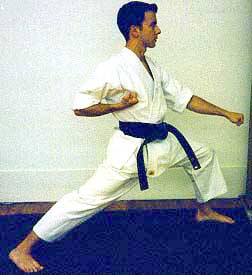
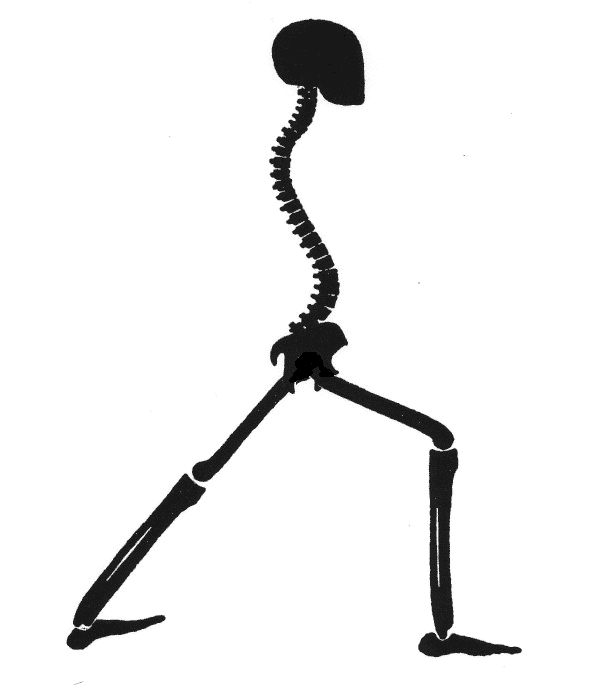
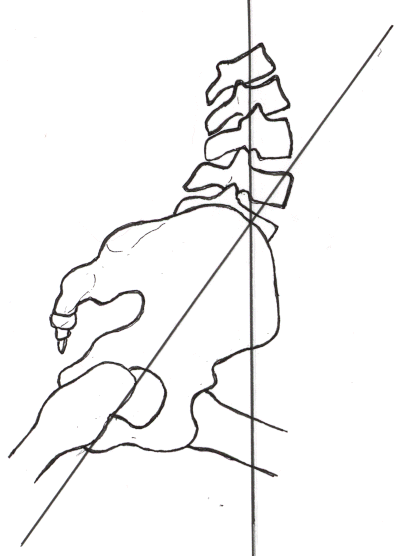

When the pelvis is tilted backward and not centered, the spine becomes misaligned and the body's center of gravity is pulled off center. This disrupts power. When the hips are not loose and fluid, power cannot flow efficiently up through the legs into the torso through the hips. And if you practice any of the energy arts, such as Ki Ko (Qi gong or Chi Kung in Chinese), natural flow of Ki energy (Qi or Chi in Chinese) is also restricted by this misalignment. Not only is this inefficient, but it could lead to pain and injury if continued.
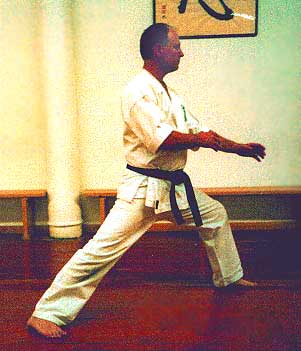
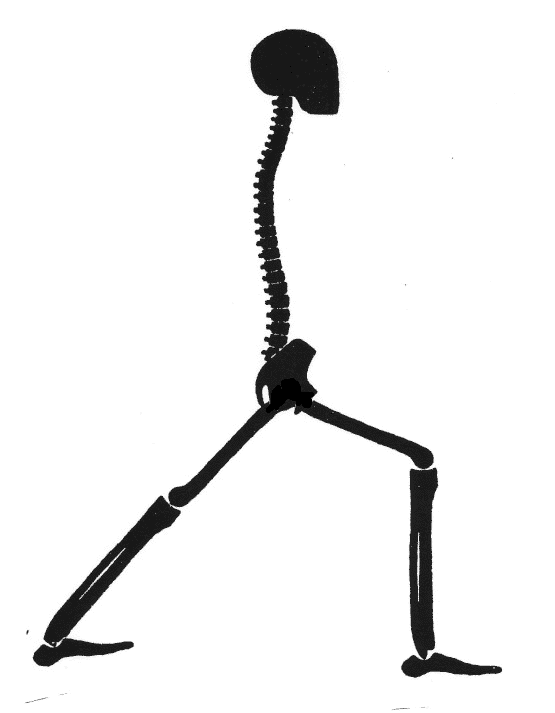
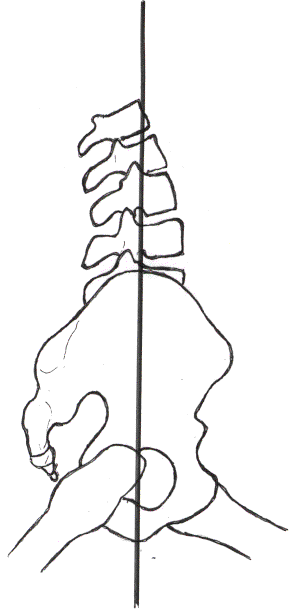

When done properly, the pelvis and low back should remain in the natural curve as much as possible. But many people when in a front leaning stance allow their pelvis to be pulled backwards by their back leg. This causes a misalignment (collapse into extension) of the spine instead of the spine being integrated and balanced as it maintains its natural curvature. When teachers say "keep the spine straight," this is what they mean.
So check your front stance: tuck in your hips and activate your abdominal muscles to help counteract the pull from the back leg. Lengthen and elongate your spine so you are in a position for power and energy to flow more easily. You will feel the difference. So will your body.
Comments:
On A Simple Lesson in Body Mechanics
By Trisha Jenkyns P.T.,
Director of Jenkyns Physical Therapy in Cambridge and Arlington, MA
I think it is helpful for people to understand the mechanics of the forward stance or any stance/position. When I look at people's body mechanics. I look for lines of energy. I look to see what muscles are activated, over activated or under activated. I also look to see what muscles are not flexible and not allowing movement or too flexible therefore allowing for collapse. In this forward stance, there are a number of things to consider:
1. The person may not have an awareness of the safe position for his or her spine and pelvis. In this case just an understanding of what the neutral curve is for each individual and the importance of maintaining this neutral curve is necessary. When you are standing your "tallest" and "with ease," your spine is usually in its "neutral" curve. Many people have been misinformed that is necessary to always tuck under the pelvis, and flatten this curve whatever position they are in. It is necessary to activate the posterior hip muscles AND abdominals only as much as is needed to maintain a neutral curve of the lumbar spine.
2. The person may not be able to execute the stance because the front hip and thigh muscles are inflexible or the calf musles of the back leg are inflexible. In this case isolated and correct stretching for these muscles is necessary. (It is also possible to work on stretching these muscles just by maintaining this stance and activating the posterior hip (gluts) and abdominal muscles as you slowly press the back heel to the floor.)
3. The person may need to activate the gluts and abdominal muscles more effectively to keep the pelvis and lumbar spine stabilized. This is what is emphasized most often, but if flexibility is also present, then the lines of energy are more available. The hips are truly loose and fluid and the power and energy will flow more readily.
Editors note: Trisha Jenkyns is also very knowledgeable in Yoga. She was a long time Tae Kwon Do practitioner and former teacher of that art at the University of New York at Buffalo. She was one of the finest teachers and technicians of the art I have ever known. Her unique mix of professional and martial arts knowledge gives her a unique prospective that can be educational for all of us.
More Comments:
On A Simple Lesson in Body Mechanics
By Greg Seel,
Director of the Alexander Technique for New York
The Alexander technique, which focuses on the understanding and development of efficient body mechanics, is a useful tool to help identify and correct a number of common bad habits with the front leaning stance. One of these is the prime focus of this examination – excessively arching the back and jamming the legs and pelvis into one another, which is often also combined with straining the neck and compressing the head back and down onto the spinal column — all which combine to create a substantial functional inefficiency and structural strain. In addition students often shift their weight too far forward onto the front leg or, overcompensating, push the head and chest up and too far back, causing rigidity and eventually injuring the knee, back or hip joint. If the head can lead the body into balanced length and expansion instead of fixed contraction, as described below, it results in greater ease and effectiveness. This is the lesson of Alexander Technique and is commonly referred to as "primary control."
The Alexander Technique looks at the effectiveness of how our bodies are used. F.M. Alexander discovered that a certain relationship of the head, neck and back resulted in a more efficient coordination of the muscular-skeletal system. The goal is to inhibit those habits that interfere with the freedom of our natural design through awareness and mental direction. This is very different from trying to muscularly manipulate the body to conform to preconceived ideas of alignment or posture that can, among other things, lead to compression of the body.
Ideally in a correct front leaning stance, as in any practical body mechanics, the primary control is activated when the pelvis and legs are organized by the traditional Alexander directions; to let the neck be free, to send the head forward and up, to lengthen and widen the back and to aim the legs away from the pelvis.) This initiates an integration of the whole body rather than the manipulation of different parts, and it enables the muscles to function closer to their intended natural length which reduces compression on the various joints.
In karate this is the intention of "straightening" the back. The back is not forced or over straightened. Instead, the natural curves of the spine are coordinated both naturally and efficiently.
When employed in the front leaning stance, the energy and weight will be up, off and centered over the legs allowing for more mobility and power to come from our center, an important principle in most martial art disciplines. There will be less downward pressure on the lower back, hip joints and knees reducing the risk of strain and injury. There will be an integrated balance and fluidity available to all our techniques. Most importantly, however, we will learn to pay attention to our overall coordination or use, so that patterns of repetitive misuse will not persist to a point of self-inflicted pain and injury which would rob us of the benefits and joy of these wonderful martial disciplines.
So often there are issues of inflexibility of certain muscle groups that cause imbalance. This is so often a result of habits and repetitive activities in our daily life such as long term sitting or other occupational situations. Encouraging right direction rather than right position leads to an integrated support by the musculature. Paying attention to the way we use our bodies can contribute greatly to enhanced performance of any kind.
The Alexander Technique directions work through a process of indirect procedures that address a state of total coordination or use of self, not specific problems. From this foundation we can achieve the greatest effect with the least effort in all our activities.
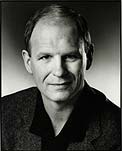
About the Author Christopher Caile
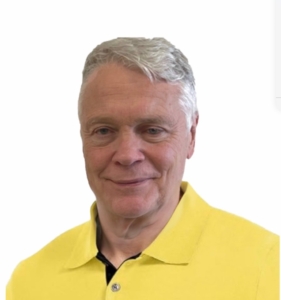
Screenshot
Christopher Caile is the Founder and Editor-In-Chief of FightingArts.com. He has been a student of the martial arts for over 65 years.
He first started in judo while in college. Then he added karate as a student of Phil Koeppel in 1959 studying Kempo and Wado-Ryu karate. He later added Shotokan Karate where he was promoted to brown belt and taught beginner classes. In 1960 while living in Finland, Caile introduced karate to that country and placed fourth in that nation's first national judo tournament.
Wanting to further his karate studies, Caile then hitch hiked from Finland to Japan traveling through Scandinavia, Europe, North Africa, the Middle East and South and Southeast Asia — living on 25 cents a day and often sleeping outside.
Arriving in Japan (1962), Caile was introduced to Mas Oyama and his fledgling full contact Kyokushinkai Karate by Donn Draeger, the famous martial artist and historian. Donn also housed him with several other senior international judo practitioners. Donn became Caile's martial arts mentor, coaching him in judo and introducing him to Shinto Muso-ryu under Takaji Shimizu.
Caile studied at Oyama's honbu dojo and also at Kenji Kurosaki's second Tokyo Kyokushinkai dojo. In his first day in class Oyama asked Caile to teach English to his chief instructor, Tadashi Nakamura. They have been friends ever since. Caile also participated in Oyama's masterwork book, "This Is Karate."
Caile left Japan with his black belt and designation as Branch Chief, the first in the US to have had extensive training in Japan directly under Oyama Sensei. As such, Oyama Sensei asked him to be his representative on visits to his US dojos to report on their status.
A little over a year later, Nakamura, Kusosaki and Akio Fujihira won an epic David vs. Goliath challenge match against Thailand's professional Muay Thai Boxers in Bangkok, Thailand, thrusting Kyolushinkai and Nakamura into national prominence.
Back in the US Caile taught Kyokushinkai karate in Peoria, Il while in college and later in Washington, DC. while in graduate school. Durimg this time Shihan Nakamura had moved to New York City to head Kyokushinkai's North American Operation.
In 1976 when Kaicho Tadashi Nakamura formed the World Seido Karate organization, Caile followed. Living then in Buffalo, NY, Caile taught Seido karate and self-defense at the State University of New York at Buffalo (SUNY Buffalo) for over 15 years where he also frequently lectured on martial arts and Zen in courses on Japanese culture.
Caile moved to New York City in 1999 to marry Jackie Veit. He is now an 8th degree black belt, Hanshi, training in Seido Karate's Westchester, NY Johshin Honzan (Spiritual Center) dojo. In Seido Caile is known for his teaching of and seminars on kata applications. He also produced a 14 segment video series on Pinan kata Bunkai currently available to Seido members.
Caile is also a long-time student and Shihan in Aikido. He studied in Buffalo, under Mike Hawley Shihan, and then under Wadokai Aikido's founder, the late Roy Suenaka (uchi deshi under Morihei Ueshiba, founder of Aikido and was Shihan under Tohei Sensei). In karate, Suenaka (8thdan) was also an in-house student of the Okinawan karate master Hohan Soken.
Having moved to New York City, Caile in 2000 founded this martial arts educational website, FightingArts.com. Twenty-five years later, in 2025, it underwent a major update and revision.
For FightingArts.com and other publications Caile wrote hundreds of articles on karate, martial arts, Japanese art, Chinese Medicine and edited a book on Zen. He also developed relationships with a cross section of leading martial arts teachers. Over the last four decades he has conducted extensive private research into karate and martial arts including private translations of the once secret Okinawan hand copied and passed on Kung Fu book, the Bubishi, as well as an early karate book by the karate master Kenwa Mabuni. He periodically returns to Japan and Okinawa to continue his studies and participate Seido karate events. In Tokyo he practiced (with Roy Suenaka Sensei) in a variety of aikido organizations with their founders – including private interviews and practices at the Aiki-kai Aikido Honbu dojo with the son and grandson of aikido's founder, Doshu (headmaster) Kisshomaru (an old uchi-deshi friend) and his son, Moriteru Ueshiba and in Iwama with Morihiro Saito. On Okinawa he studied Goju Ryu karate under Eiichi Miyazato, 10th dan founder of Naha's Jundokan, and also with Yoshitaka Taira (who later formed his own organization, who specialized in kata Bunkai. While there Caile also trained with Hohan Soken's senior student, Master Fusei Kise, 10 dan as well as with the grandson of the legendary karate master Anko Itosu.
Caile's other martial arts experience includes: Diato-ryu Aikijujitsu and Kenjitsu, kobudo, boxing, Muay Thai, MMA, Kali (empty hand, knife and bolo), study of old Okinawan Shoran-ryu & Tomari body mechanics, study of old Okinawan kata under Richard Kim, study of close quarter defense and combat, including knife and gun defenses, Kyusho Jitsu and several Chinese fighting arts including 8 Star Praying Mantis, Pak Mei (White Eyebrow), and a private family system of Kung Fu.
Caile is also a student of Zen as well as a long-term student of one branch of Traditional Chinese Medicine, Chi Kung (Qigong). As one of two senior disciples of Chi Kung master Dr. Shen (M.D., Ph.D.) Caile was certified to teach and practice. This led to Caile's founding of the The Chi Kung Healing Institute on Grand Island, NY. In Western NY, he also frequently held Chi Kung seminars, including at SUNY Buffalo and at the famous Chautauqua Institution in Chautauqua, NY. His articles on Chi Kung also appeared in the Holistic Health Journal and in several books on alternative medicine.
Caile holds a BA in International Studies from Bradley University and MA in International Relations with a specialty in South and Southeast Asia from American University in Washington, D.C. While in Buffalo, NY he also studied digital and analog electronics.
In his professional life Caile also worked in public relations and as a newspaper reporter and photographer. Earlier he worked in the field of telecommunications including Managing a Buffalo, NY sales and service branch for ITT. He then founded his own private telephone company. This was followed by creation of an electrical engineering company that designed and patented his concept for a new type of low-cost small business telephone system (which was eventually sold to Bell South). The company also did contract work for Kodak and the US space program. Simultaneously Caile designed and manufactured a unique break-apart portable pontoon boat.
Most recently Caile co-founded an internet software company. Its products include software suites with AI capability for control and management of streaming media, such as video and music, an all-in-one book publishing software product for hardcover, eBook and audio book creation and security software for buildings and government use.
For more details about Christopher Caile's martial arts, work experience and life profile, see the About section in the footer of this site.
Search for more articles by this author:






